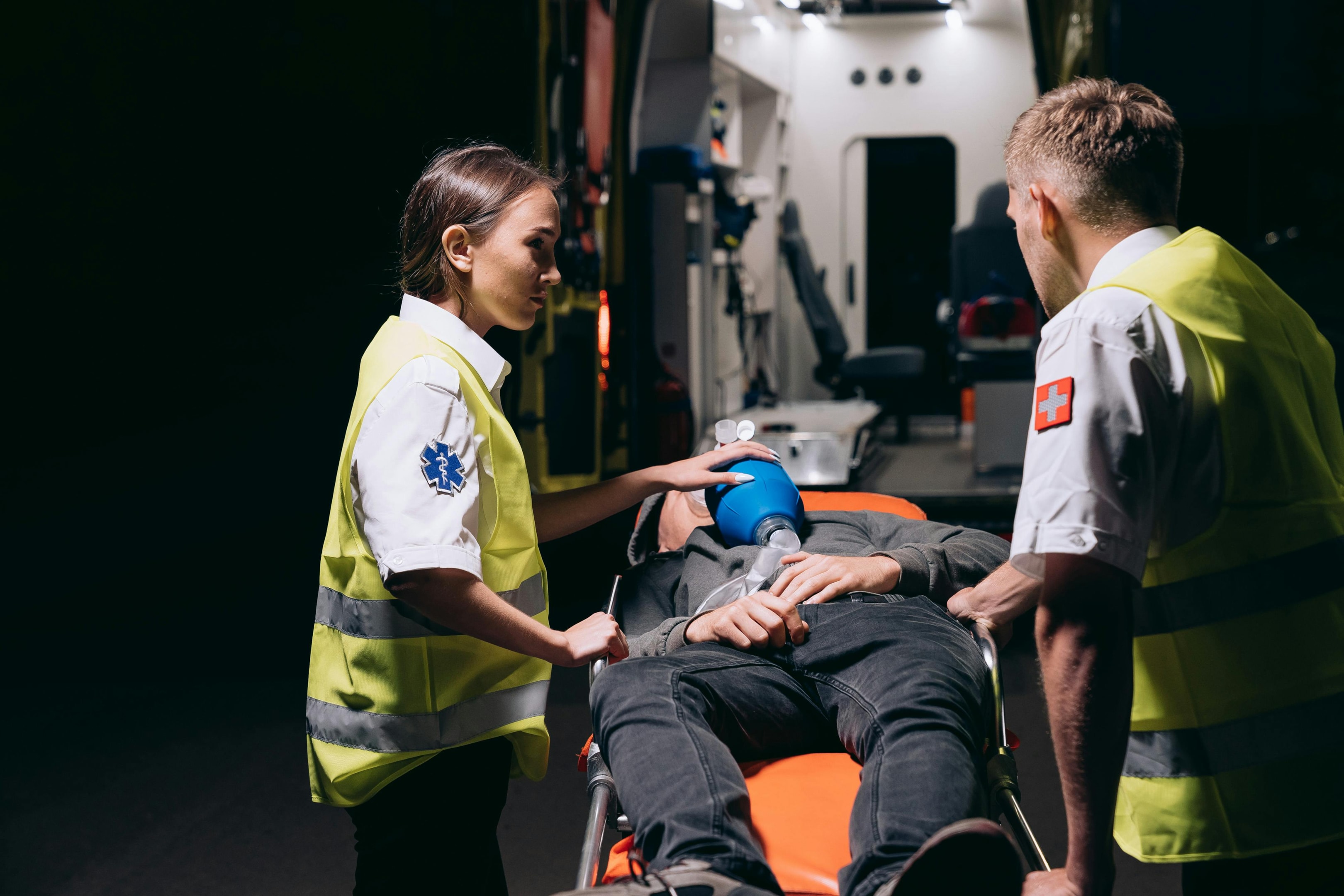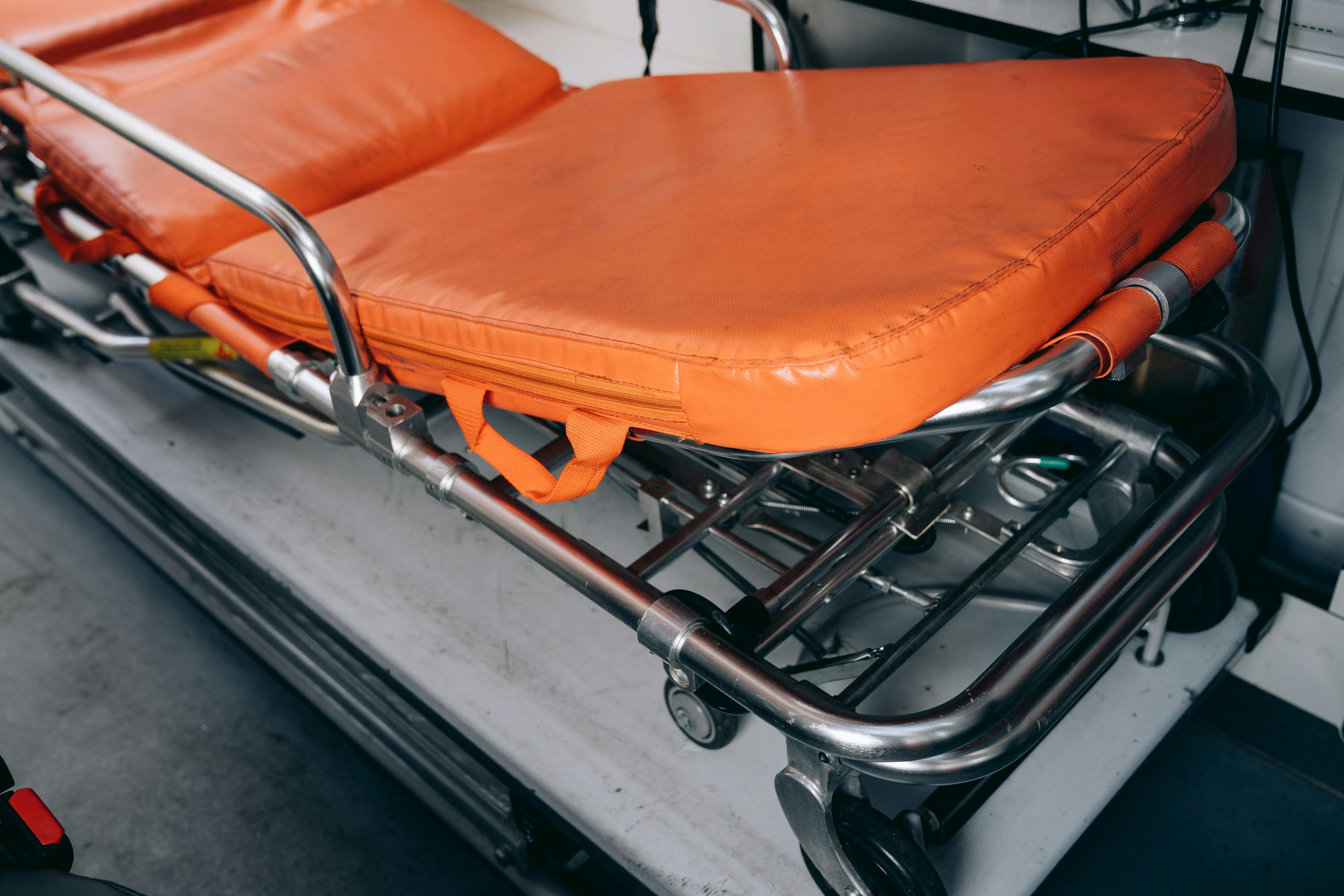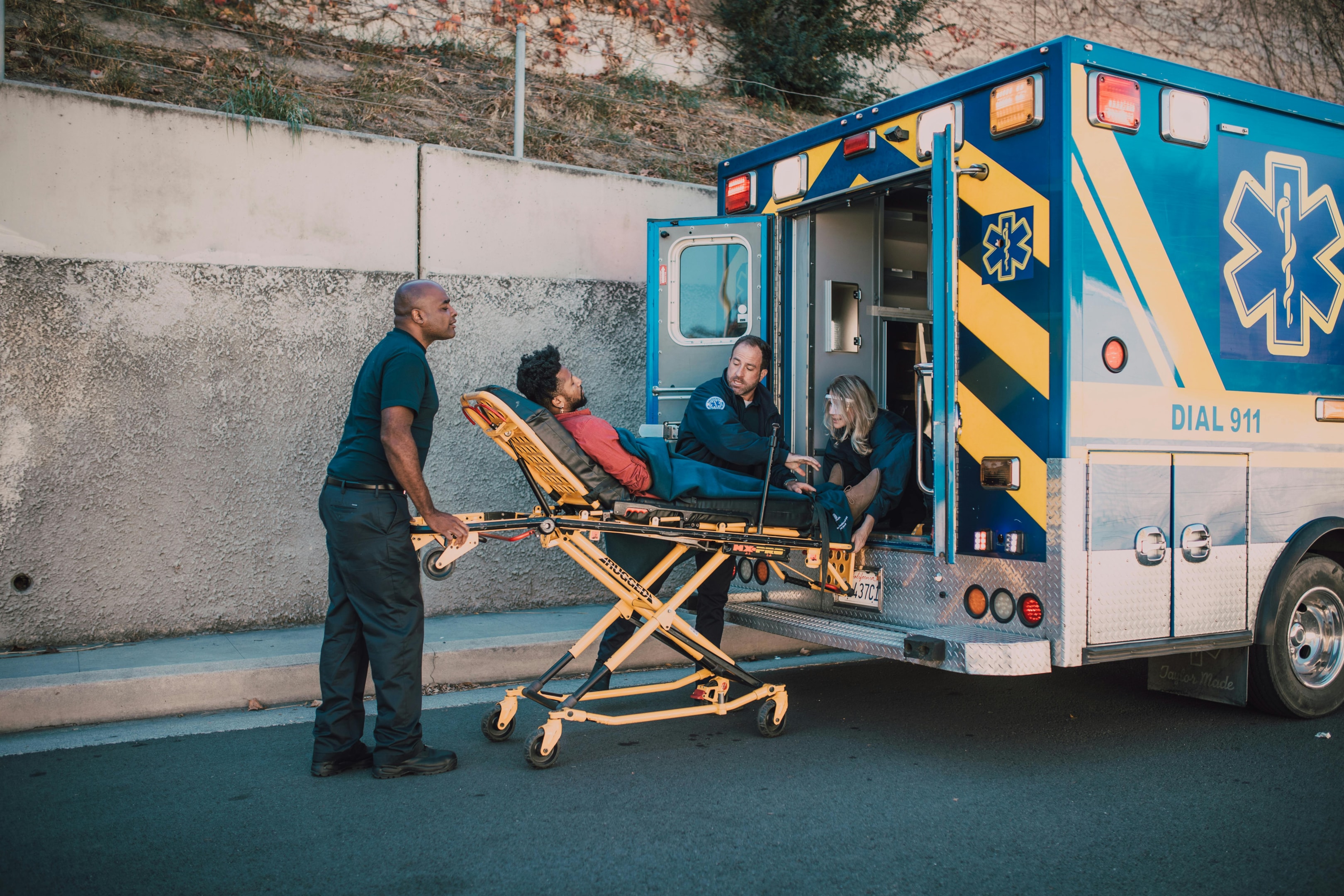Choosing the right stretcher dimensions isn’t just about convenience—it’s about saving lives. Imagine emergency personnel rushing to save a patient, only to struggle with a stretcher that doesn’t fit a medical emergency service elevator. This isn’t just frustrating; it’s equivalent to losing crucial time that could save lives.
You need a stretcher that can accommodate the demands of two emergency personnel working in high-pressure situations. The choice must balance practicality, durability, and size. At the same time, the wrong choice can complicate emergency operations. This guide will help you in making this choice.
Let’s get started.
Importance of Dimensions for Medical Emergency Service Elevator
Medical emergency services depend on stretchers that fit perfectly into elevators, doorways, and hallways to provide safe and efficient patient transport. This is because they are used both within and outside hospital buildings.
Here, we will dive into why sizes matter and how medical emergency service elevators impact patient care and operational efficiency.
Why Stretcher Dimensions Matter
- Medical Emergency Service Elevator
Medical emergency service elevators must fit the stretchers easily. A poorly sized stretcher can cause delays in loading and transporting patients. For example, stretchers with a width of 22 to 24 inches fit standard elevator size, ensuring seamless movement. - Patient Comfort and Safety
Dimensions directly impact patient safety and comfort. A transport stretcher that’s too narrow may restrict movement, while one that’s too wide may cause issues in tight spaces. Stretchers with a minimum size of 24 inches by 84 inches in the open position strike the right balance between functionality and comfort. - Efficiency for Two Emergency Personnel
Emergency personnel require stretchers with adequate working space. A diameter circular area of at least 21 inches for each team member ensures they can perform critical tasks efficiently. This is especially important in high-pressure situations . - Maneuverability in Tight Spaces
Maneuvering is key when navigating radius corners, doorways, and hallways. Standard sizes allow for smooth movement in narrow buildings and confined areas. Features like a 5-inch radius corner design help with tight turns. - Adaptability and Flexibility
A stretcher with adjustable height settings (12 to 36 inches) improves usability. They allow staff to hold patients of different sizes and adjust for specific procedures.
Standard Dimensions of Hospital Stretchers
Hospital stretchers are designed with precise measurements to ensure they accommodate diverse patient needs while maintaining operational efficiency. The minimum size of a hospital stretcher typically measures 24 inches by 84 inches, with 5-inch radius corners when in the horizontal, open position.
Standard sizes are mentioned below:
- Width: It ranges from 22 to 24 inches (56–61 cm).
- Length: Typically, hospital stretchers are 75 to 80 inches (190–203 cm).
- Height Adjustability: The height settings are adjustable, ranging from 12 inches to 36 inches (30–91 cm).
Design Considerations for Stretcher Dimensions
When designing stretcher, it’s essential to consider various factors that ensure functionality, comfort, and adaptability to different use cases.
Below are the critical considerations:
Patient Demographics and Needs
Hospital stretcher must meet diverse patient requirements. They are designed to accommodate various sizes, conditions, and mobility needs. Pediatric stretchers are typically 24–28 inches wide, while bariatric stretchers often exceed 40 inches in width to accommodate heavier patients.
The type of materials used in their making also depends on the weight estimates. Stretcher with flexible dimensions helps carry patients of different body types and ensure patient comfort in an open position.
Patient Safety Features
Safety is a top priority when transporting the injured.
- Side Rails and Secure Belts: Prevent falls and stabilize patients.
- Padding: Reduces pressure points, especially for geriatric patients.
- Size-Specific Options: Pediatric stretchers offer extra security for smaller patients.

Environmental Constraints
Hospital stretchers must be performed in various settings, from corridors to loading docks. Their design should adapt to space limitations while maintaining functionality.
Choosing the right stretcher sizes improves efficiency and safety in constrained environments. Always consider these factors for optimal performance.
- Elevator Compatibility: Stretchers should fit medical emergency service elevators. These typically have clearances of 84–96 inches in height and 40–60 inches in width.
- Compact Design: Maneuverability in diameter circular area, such as operating rooms, requires compact, adjustable frames. Swivel wheels enhance ease of movement. Furthermore, the materials used in its production are also important.
- Smooth Transitions: Transport stretchers must steer easily when fully loaded. This ensures safe and efficient patient movement between departments.
- Tight Spaces: Stretchers should turn smoothly around radius corners in hospital corridors. Stability and patient safety should never be compromised.
- Width Standards: Industry standards recommend stretchers with a width of 30–40 inches. This ensures the balance between comfort and functionality while preventing collisions.
Choosing the Right Stretcher for Your Medical Facility
Hospital stretchers come in different sizes, each with features that help with patient transportation and care. The best option for your facility depends on the working environment, equipment, and patient needs.
Facility Size and Layout
The minimum size and layout of your facility matter when picking a stretcher. You need to consider tight spaces, narrow hallways, and areas like medical emergency service elevators. The stretcher’s width is especially important when moving through doorways, elevators, or corners.
Stretchers that are too wide or long can cause delays, while narrow ones might not be comfortable for patients.

Type of Patients
The stretcher should fit the type of patients you plan to transport. Patients with limited mobility may need an flexible stretcher with extra cushioning. For emergency situations, a lightweight ambulance gurney or transport stretcher may be needed.
Optimizing Stretcher Use in Your Facility
Hospital stretchers should be easy to move and accessible. They need to fit through tight spaces and remain stable. It should work with the loading mechanisms in the medical emergency service elevator and be able to open fully when needed.
Maneuverability and Features
Stretcher features like modifiable headrests, side rails, and footrests improve patient comfort and make it easier for emergency personnel to move patients. The stretcher should be easy to maneuver, especially in stressful situations. Wheels with shock absorbers and sturdy brakes are key for smooth, stable transport.

Optimizing Stretcher Use in Medical Facilities
Hospital stretchers must be efficient and reliable. They should work seamlessly with medical emergency service elevators for safe and quick transport. A stretcher that doesn’t fit properly in these elevators can cause delays during emergencies. To optimize stretcher use:
- Ensure the stretcher fits well in hallways, elevators, and around radius corners.
- Choose lightweight options that are sturdy and secure for patient transportation.
- Stretchers should have adequate padding for comfort during transportation.
- Check the equipment frequently to ensure all parts are functioning.
- Replace worn-out parts to avoid breakdowns in emergencies.
- Keep them clean and hygienic to meet medical standards.
By considering these factors, medical facilities can ensure stretchers perform well under pressure and enhance patient care.

Choosing Between Standard and Specialty Stretchers
When selecting a stretcher, you need to consider the minimum size, specific use cases, and how well it can accommodate different patients. Whether it’s for general hospital use or navigating challenging environments, understanding the width, length, and adaptability of each option is essential. Let’s break down their types and their practical applications.
1. Bariatric Stretcher
If you’re working with bariatric patients, you need a stretcher that provides both support and comfort. These are designed for individuals with larger body sizes, offering additional width and weight capacity. This is why they are made with sturdy and strong materials.
- Dimension: 80–90 inches (203–229 cm) length and 30–36 inches (76–91 cm) width.
- Use: Ideal for transporting overweight or obese patients safely and comfortably.
2. Pediatric Stretcher
Transporting infants and children requires precision. You need a stretcher tailored to their size, with features ensuring safety and comfort.
- Dimension: 50–60 inches (127–152 cm) length and 18–22 inches (46–56 cm) width.
- Use: Specifically designed for young patients, with adjustable options to cater to various age groups.
3. Folding Stretcher
If portability is a priority, you’ll want a folding stretcher. Lightweight and compact, this is perfect for emergency situations.
- Dimension: Typically 70–72 inches (178–183 cm) length and 22 inches (56 cm) width.
- Use: Excellent for rapid deployment where space-saving is crucial.
4. Vacuum Stretcher
When dealing with trauma or spinal injuries, you need the custom support a vacuum stretcher offers. It molds to the patient’s body for maximum stabilization.
- Dimension: Around 70–72 inches (178–183 cm) length and 22 inches (56 cm) width, but adaptable to the patient’s shape.
- Use: Perfect for immobilizing trauma patients with irregular body contours.
5. Spinal Board (Long Board)
For suspected spinal injuries, you must use a spinal board. This provides full-body immobilization during transport.
- Dimension: 72 inches (183 cm) length and 16 inches (41 cm) width.
- Use: Designed to prevent movement and protect spinal alignment.
6. Stair Stretcher
Navigating stairs with a patient? You need a stair stretcher. Built for maneuverability in tight spaces, it’s a lifesaver in multi-story buildings.
- Dimension: Typically 70 inches (178 cm) length and 24 inches (61 cm) width.
- Use: Specifically designed for stair navigation during patient transfers.
7. Rescue Stretcher (Aluminum or Rigid Stretcher)
For rugged environments, you need a rescue stretcher. Built tough for extreme conditions, it’s the go-to for search and rescue teams.
- Dimension: Usually 72 inches (183 cm) length and 24 inches (61 cm) width.
- Use: Ideal for mountain rescues, rugged terrains, or hazardous environments.

Recommended Companies
When it comes to stretcher dimensions and quality, Jiekang is a trusted name in the industry. This company specializes in designing and manufacturing stretchers that meet the highest standards of safety, comfort, and functionality.
Jiekang’s stretchers are designed with adjustable dimensions to accommodate a wide range of patient sizes, making them suitable for diverse medical environments.

Conclusion
In conclusion, selecting the right stretcher for your medical facility is crucial for patient safety, comfort, and efficient transport. Stretcher dimensions play a significant role in ensuring easy maneuvering through narrow spaces and medical emergency service elevators. The stretcher must address diverse patient needs while fitting within the facility’s constraints.
Jiekang Medical Equipment offers high-quality, adaptable stretchers designed for optimal performance. For tailored advice and assistance in stretcher selection, reach out to our experts. Visit our website or contact us today to discuss your facility’s specific requirements.



